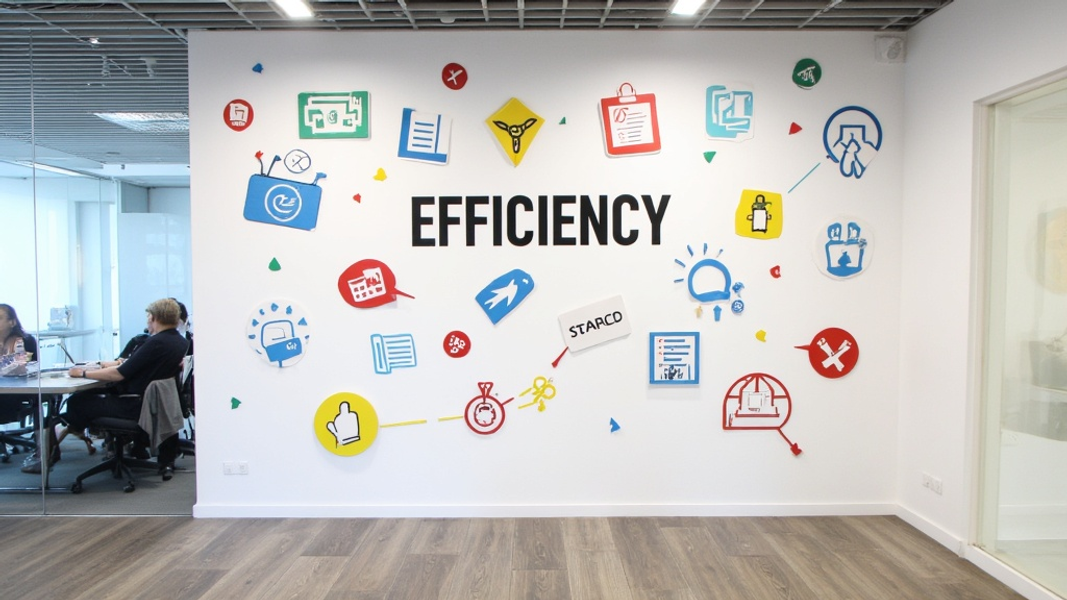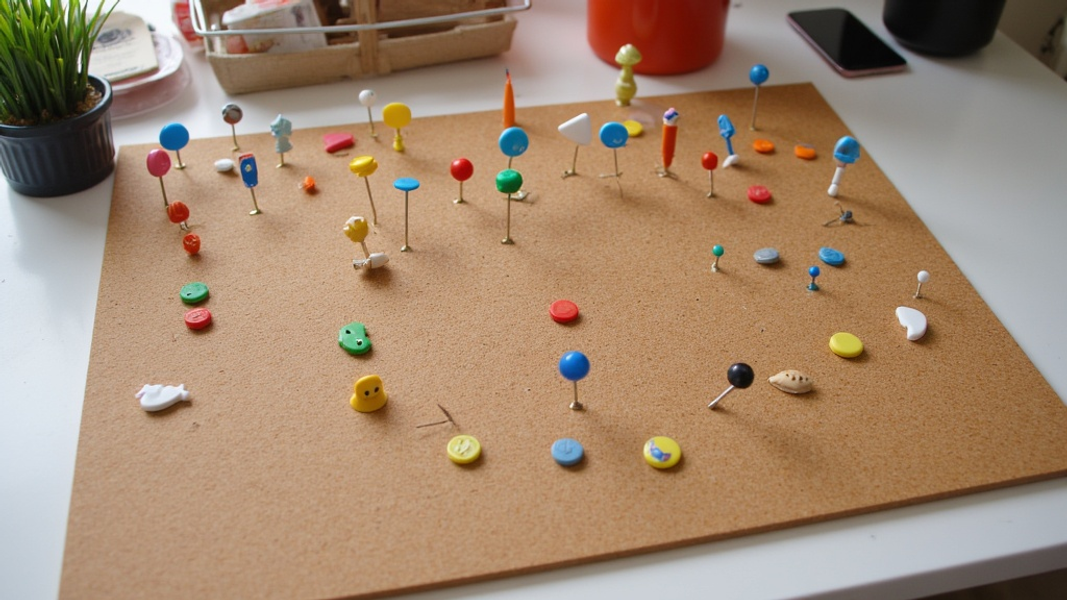
Did you know that businesses using marketing automation see a 14.5% increase in sales productivity on average? This post will explore 25 powerful marketing automation ideas to boost your marketing efficiency and results.
What is Marketing Automation?
Marketing automation uses software to handle repetitive marketing tasks without human help. It saves time and makes marketing more effective. Common uses include sending emails, managing social media posts, and tracking website visitors.
The main benefits of marketing automation are:
- Time savings: Automate routine tasks to free up your team for creative work.
- Improved targeting: Send the right message to the right person at the right time.
- Better data: Get insights into what works and what doesn't.
Many businesses use marketing automation for email campaigns, lead scoring, and customer segmentation. It's also helpful for social media scheduling and ad management.
Getting Started with Marketing Automation
To start with marketing automation, first pick a platform that fits your needs. Popular options include HubSpot, Mailchimp, and ActiveCampaign. Look for features that match your goals and budget.
Next, set clear goals for your automation efforts. Do you want to generate more leads? Improve customer retention? Boost sales? Pick specific, measurable targets to track your progress.
Finally, create a plan for implementing automation. Start small with one or two processes, then expand as you learn. This approach helps you avoid overwhelm and see quick wins.
Lead Generation Automation Ideas
1. Automated Lead Magnet Delivery
Create valuable content like ebooks or checklists. Offer them for free in exchange for an email address. Set up your system to automatically send the content when someone signs up. This builds your email list and gives potential customers useful information.
2. Website Visitor Tracking and Personalization
Use tools like Google Analytics to track how visitors interact with your site. Then, use this data to show personalized content. For example, if someone often reads blog posts about social media, show them more social media content when they visit.
3. Social Media Lead Ads Integration
Social media platforms like Facebook and LinkedIn offer lead generation ads. These ads let users sign up for your offer without leaving the platform. Connect these ads to your marketing automation tool to automatically add new leads to your database.

Lead Nurturing Automation Ideas
4. Welcome Email Series
When someone joins your email list, send them a series of welcome emails. Start with a friendly greeting and explain what they can expect from your emails. In later messages, share your best content and offers. This helps new subscribers get to know your brand over time.
5. Lead Scoring and Segmentation
Assign points to leads based on their actions. For example, give 5 points for opening an email and 10 points for visiting your pricing page. Use these scores to identify your most interested leads. Then, segment your list based on scores and other factors like industry or company size.
6. Dynamic Content Personalization
Create email templates with sections that change based on subscriber data. For instance, show different product recommendations to men and women. Or, display different content to beginners and experts. This makes your emails more relevant and engaging.
Sales Process Automation Ideas
7. Automated Meeting Scheduling
Use tools like Calendly to let leads book sales calls directly on your calendar. This eliminates the back-and-forth of finding a good time. It also reduces no-shows by sending automatic reminders.
8. Quote and Proposal Generation
Set up your CRM to automatically create quotes based on prospect information. Pull in details like company size, product interest, and custom requirements. This speeds up the sales process and ensures consistency in your proposals.
9. Sales Pipeline Management
Use your CRM to automatically move deals through stages based on actions taken. For example, when a prospect books a demo, move them to the "Demo Scheduled" stage. This keeps your pipeline up-to-date without manual work.
Customer Onboarding Automation Ideas
10. Automated Onboarding Sequences
Create a series of emails to guide new customers through your product. Start with the basics and gradually introduce more advanced features. This helps customers get value from your product quickly and reduces support requests.
11. In-App Messaging and Tooltips
Use tools like Intercom to show helpful messages inside your product. Trigger these messages based on user actions or inaction. For example, show a tip about creating a project if a user hasn't done so after a week.
Customer Retention Automation Ideas
12. Renewal and Upsell Campaigns
Set up automated emails to remind customers when their subscription is ending. Include an easy way to renew. For customers using your product a lot, send targeted upsell offers for premium features or higher-tier plans.
13. Customer Feedback and NPS Surveys
Regularly ask customers for feedback using automated surveys. Use tools like SurveyMonkey to measure Net Promoter Score (NPS). This helps you identify happy customers for testimonials and unhappy ones who need extra attention.
E-commerce Automation Ideas
14. Abandoned Cart Recovery
When someone adds items to their cart but doesn't buy, send them a reminder email. Start with a friendly message about their forgotten items. If they still don't purchase, follow up with a small discount to encourage them to complete their order.
15. Post-Purchase Follow-ups
After a customer buys, send a series of emails to enhance their experience. Start with a thank you message and order confirmation. Later, ask for a product review. You can also suggest related products they might like based on their purchase.
16. Inventory Alerts
Let customers sign up for notifications when out-of-stock items are available again. This creates a sense of urgency and helps you capture sales that might otherwise be lost. You can also create waitlist pages for upcoming products to build excitement.

Case Studies
Let's look at how real companies have used marketing automation to improve their results.
HubSpot, a popular marketing software company, used automation to increase their qualified leads by 35%. They set up a lead scoring system to identify their best prospects. Then, they used automated email campaigns to nurture these leads with targeted content. This helped their sales team focus on the most promising opportunities.
Marketo, another marketing automation platform, saw a 2.5x increase in email engagement rates. They achieved this by using dynamic content personalization. Instead of sending the same email to everyone, they tailored the content based on each recipient's interests and behavior. This made their emails more relevant and interesting to readers.
Conclusion
Marketing automation offers many ways to improve your marketing efforts. From lead generation to customer retention, automation can help you work smarter, not harder. Start by choosing one or two ideas from this list and implement them in your business. As you get comfortable with automation, you can add more advanced techniques.
Remember, the goal of marketing automation is to provide a better experience for your customers while saving time and resources for your team. Keep this balance in mind as you explore these ideas and develop your own automation strategies.
FAQs
What is the best marketing automation software?
The best marketing automation software depends on your specific needs and budget. Popular options include HubSpot, Mailchimp, and ActiveCampaign. Consider factors like ease of use, integration with your existing tools, and scalability when choosing a platform.
How much does marketing automation cost?
Marketing automation costs vary widely. Some basic tools are free, while enterprise-level platforms can cost thousands of dollars per month. Many providers offer tiered pricing based on the number of contacts or features you need. Start with a free or low-cost option and upgrade as your needs grow.
Can small businesses benefit from marketing automation?
Yes, small businesses can benefit greatly from marketing automation. It helps you do more with limited resources. Start with simple automations like welcome emails or abandoned cart reminders. As your business grows, you can add more complex automations to scale your marketing efforts.
How long does it take to see results from marketing automation?
The time to see results from marketing automation varies. Some tactics, like abandoned cart emails, can show quick wins in days or weeks. Others, like lead nurturing campaigns, may take months to fully impact your bottom line. Be patient and focus on gradual improvements over time.
Is marketing automation impersonal?
When done right, marketing automation can actually make your communications more personal, not less. By using data to tailor your messages, you can provide more relevant content to each recipient. The key is to use automation to enhance your personal touch, not replace it entirely.
